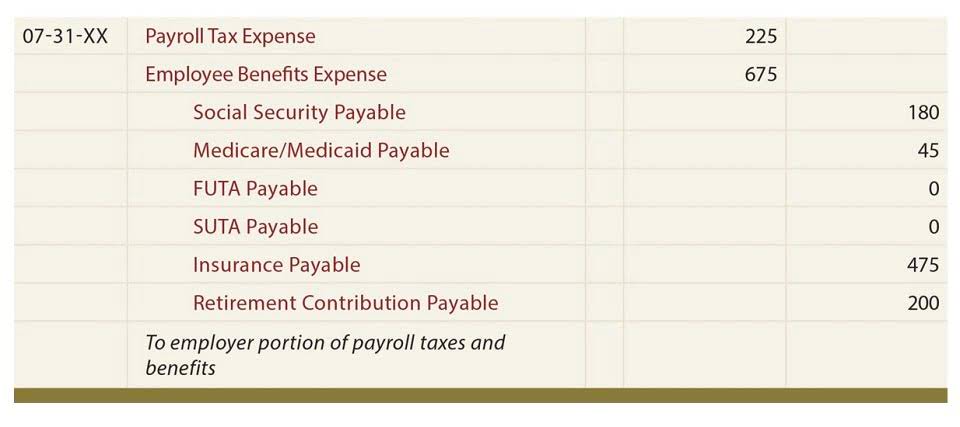What is an accounts receivable journal entry? Quick guide

The entry to record a sales return or allowance involves debiting the Sales Returns and Allowances account and crediting the Cash or Accounts Receivable account, effectively reducing the recorded sales revenue. Based on the nature of the sale, the relevant accounts are determined. For cash sales, the Cash account is used, while credit sales involve the Accounts Receivable account.
- To keep track of whom the company owes money to and when payment is due, the entries are posted daily to the accounts payable subsidiary ledger.
- HashMicro provides software that can help manage your business finances.
- After the posting, the account number or a check is placed in the post reference (Post Ref.) column.
- This attention to regulatory requirements safeguards your business’s financial integrity.
- Proper organization reduces errors and saves valuable time during audits.
- Finally, at the end of the month, the accounts receivable trial balance is prepared.
Example of Sales Journal Entry

However, most firms enter those transactions in the general journal, along with other transactions that do not fit the description of the specific types of transactions contained in the four special Online Accounting journals. The general journal is also necessary for adjusting entries (such as to recognize depreciation, prepaid rent, and supplies that we have consumed) and closing entries. For example, a $100 sale with $10 additional sales tax collected would be recorded as a debit to Accounts Receivable for $110, a credit to Sales for $100 and a credit to Sales Tax Payable for $10. A sales journal is a particular journal for an accounting cycle whose job is to record sales transactions.

Subscribe to Chaser’s monthly newsletter
In this example some information has been omitted to simplify the example. In practice, each line item would include the information listed above. For locations with sales taxes, you sales journal example also need to record the sales tax that your customer paid so you know how much to pay the government later.
How to record accounts receivable in a journal entry?
By keeping a separate record of credit sales, businesses can Bookkeeping for Chiropractors streamline the accounting process, reduce errors, and ensure accurate financial reporting. An accounts receivable journal entry is a critical component of the accounting process for businesses that extend credit to their customers. This journal entry records the sale of goods or services on account and the corresponding increase in accounts receivable. In the purchases journal, using the perpetual method will require we debit Inventory instead of Purchases.
- Good internal control dictates the best rule is that all cash received by a business should be deposited, and all cash paid out for monies owed by the business should be made by check.
- The idea behind this is related to getting rid of on-hand inventory.
- To create a journal entry in your general ledger or for a sale, take the following steps.
- This software also allows the inventory to be automatically updated when a specific good is running low on inventory, by automatically ordering that particular good from the supplier.
- Say cash the seller is receiving within the discount period (10 days) from a credit sale of $1,500,000 and VAT of 10%.
- This is because the accounts receivable account is an asset account, and assets are increased by debits.

This transaction is recorded with a debit to Allowance for Doubtful Accounts and a credit to Accounts Receivable. Journal entries for an accounts receivable record are a critical component of the accounting process for businesses that extend credit to their customers. These entries record the sale of goods or services on account and the corresponding increase in accounts receivable. At the end of the month, we total the Cash column in the cash receipts journal and debit the Cash account in the general ledger for the total. Let’s consider a practical example of a sales revenue journal entry in accounting, focusing on both a cash sale and a credit sale scenario. Sales journal entries are accounting records used to document revenue generated from the sale of goods or services.
- Modern accounting software automates many traditional manual processes, reducing errors and increasing efficiency.
- These technological advances make it easier to maintain accurate records and generate insightful reports.
- For a refresher on perpetual versus periodic and related accounts such as freight-in, please refer to Merchandising Transactions.
- It helps create an understanding of both active sales and future sales.
Can accounts receivable journal entry be reversed or modified?

The sales journal is simply a chronological list of the sales invoices and is used to save time, avoid cluttering the general ledger with too much detail, and to allow for segregation of duties. In turn, the individual entries in the sales journal are posted to the respective accounts in the accounts receivable subsidiary ledger. When a specific accounts receivable is deemed uncollectible, it is written off against the allowance for doubtful accounts in a journal entry to clear accounts receivable.

Modern accounting software automates many traditional manual processes, reducing errors and increasing efficiency. These technological advances make it easier to maintain accurate records and generate insightful reports. All retail companies must have a primary business that makes buying and selling on an ongoing basis.
It records the sale of goods or services on account and the corresponding increase in accounts receivable. Accounts receivable journal entries are a critical component of the accounting process for businesses that extend credit to their customers. When the customer pays for the goods or services, the accounts receivable is reduced. This transaction is recorded with a debit to Cash and a credit to Accounts Receivable.
